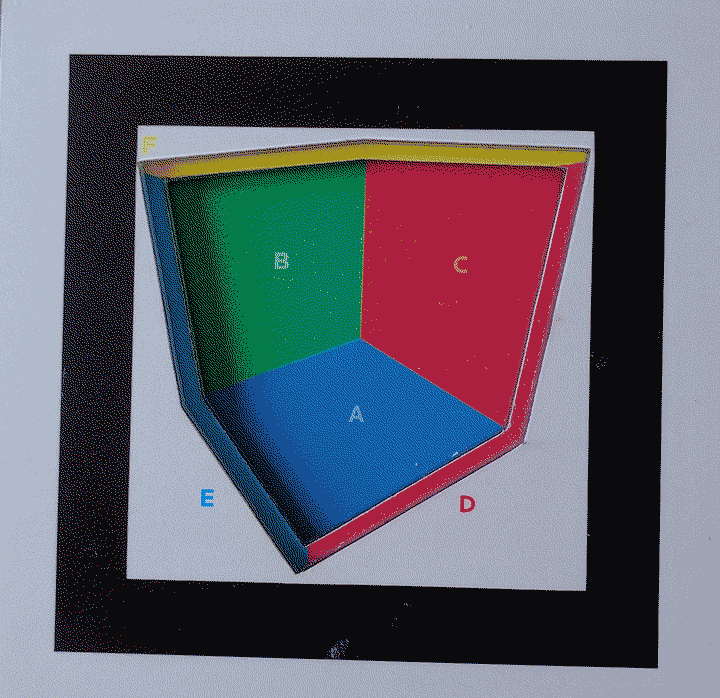Demonstrating Augmented Reality
A physical demonstration of Augmented Reality for library patrons.
In collaboration with Scott Reinhard.
I handled the complete digital half of the project. I built the software which ran on the computer. My work included testing different technologies, building prototypes, testing them in controlled environments, and conducting a pilot test before final deployment.
April, 2015
For this studio project, we built an installation for the James B. Hunt Jr. Library at North Carolina State University. This installation introduced Augmented Reality (AR) to its patrons by means of simple demonstrations that the user could interact with.
The installation consists of a physical tray to hold puzzle-piece-like triggers, and a computer which reads the current combination of pieces in the tray. Different combintations in the tray trigger different responses on screen.
The subject matter focuses on giving the user an overview of the function, history, and current uses of AR via generative interactive art, videos, photos and three dimensional models. Ivan Sutherland's 3-dimensional room used to demonstrate AR in his 1971 head-mounted display (HMD) prototype was recreated as an homage to his contributions to the field. The patterned triggers were based on the work by pioneering Czechoslovakian computer artist Zdeněk Sýkora.
The software was made in Processing, making use of the open-source NyARToolkit library. The software, in addition to recognizing the current state, also takes into account the path via which the user got to the current state. The responses on screen are affected by both of these factors. This prevents the interaction from becoming stale with time, and maintains a high replay value while keeping the user engaged.
